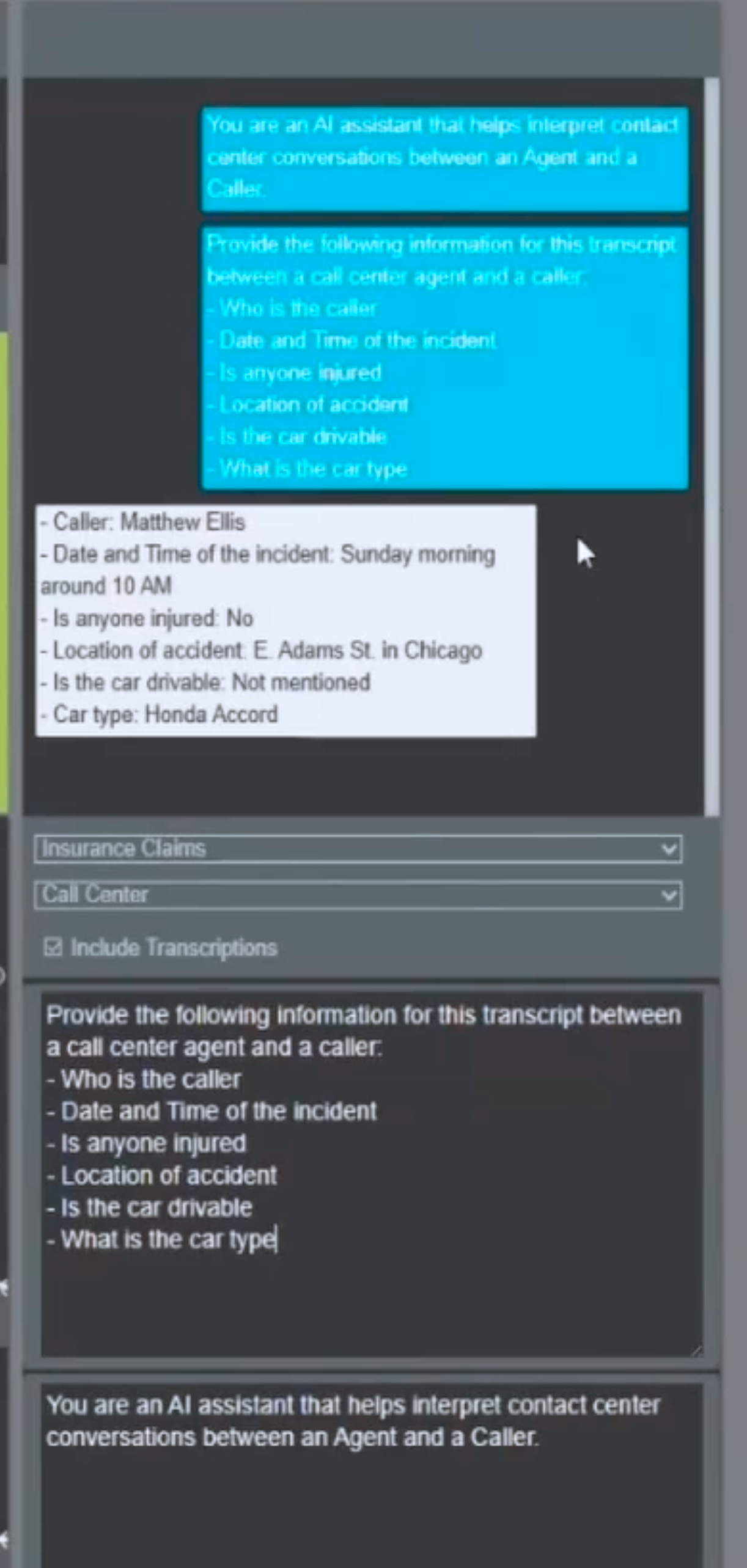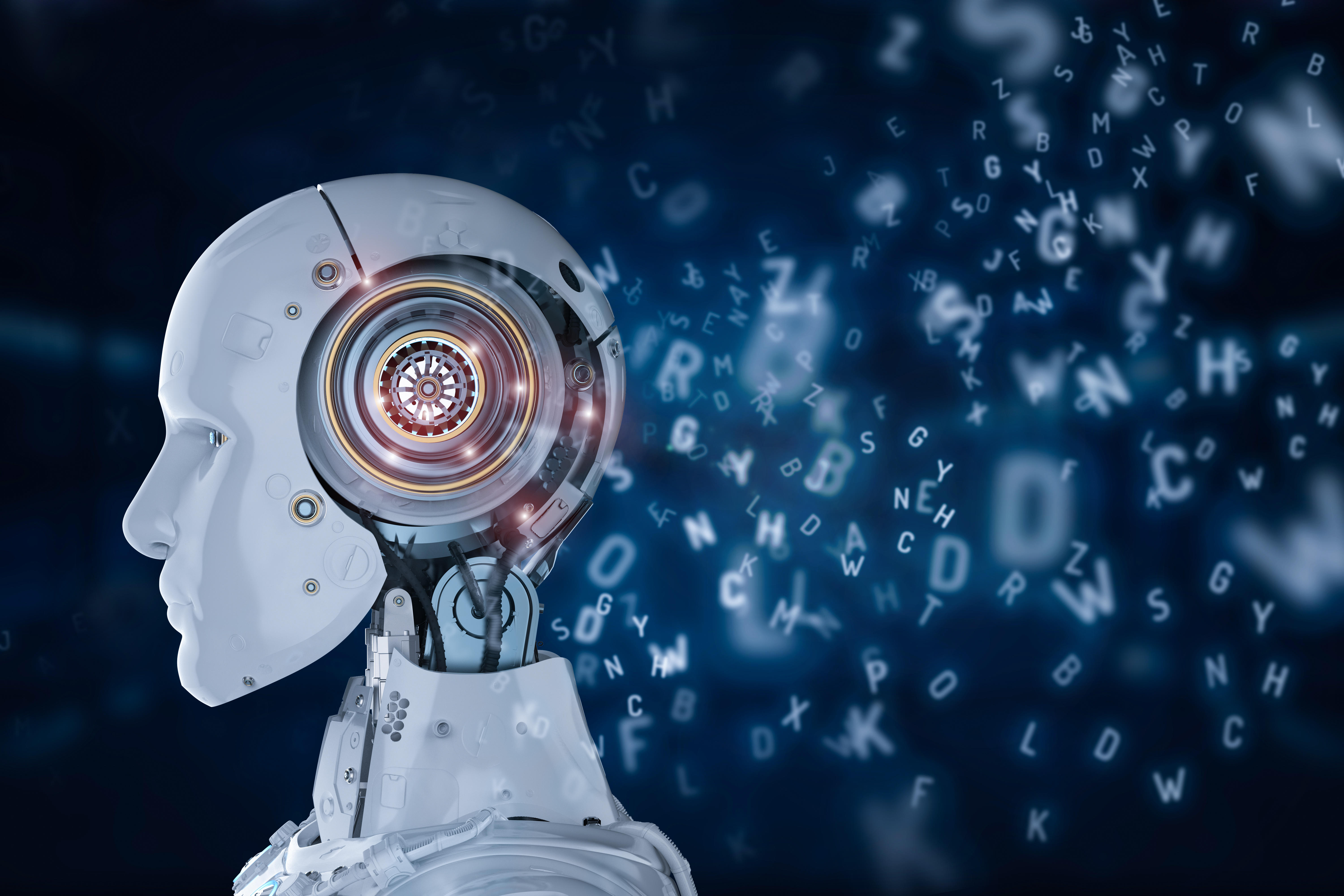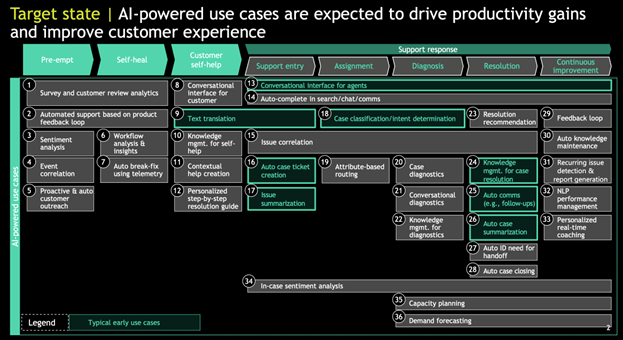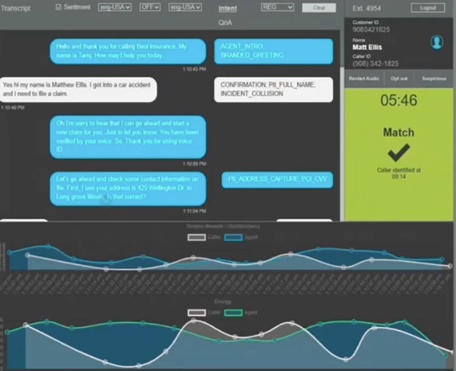Generative AI (gen AI) could boost customer service by improving self service, and it could boost customer service by improving live agent assistance. Chad Hamblin, Director of Business Strategy with Microsoft and Simon Bamberger, Managing Director and Partner, Boston Consulting Group (BCG), participated in a Microsoft webinar on November 28, 2023, “Reimagining Customer Service and Support with the Power of Generative AI,” that outlined how this would work.
“Within those early use cases of gen AI are those for which you do not need connections to underlying knowledge bases, customer data or products, but instead can leverage the more native functionalities of an AI such as issue or case summaries and the drafting of communications to be sent to customers,” Bamberger said. “The higher value unlock, however, comes through the use cases that do leverage customer product data such as diagnosing the problem and providing recommendations for problem resolution.”
The following slide highlights (in bright LED green) the typical early use cases BCG has identified for gen AI. Bamberger said that BCG has seen companies realize an 80% reduction in the time that it takes to create after-call summaries and, in one instance, from 45 minutes per summary to 10 minutes per case. He cited several other examples, as well.
A significant portion of the webinar was dedicated to a demo of a generative AI-powered contact center solution in the insurance sector, a portion of which is shown in the following graphic. Basically, a customer called in to file a claim after they’d been in a car accident. The demo showed the real-time prompts delivered to the agent, the real-time transcription of the interaction and how the system itself flagged the various key events during the call such as script adherence and when the agent received the caller’s full name, address, etc. (It wasn’t made clear during the demo if these events required generative AI or not.) Hamblin ran the demo, but did not indicate what contact center platform was used.
Hamblin then provided a rapid-fire overview of the integrations to other systems that were required to make the demo function:
- Audio acquisition services that captured the audio off the telephony line and then piped it (in stereo) to the agent. The green box with “match” in it shows that the caller was identified via voice print within 14 seconds of the call starting.
- That audio was forked into a real time transcription engine that was piped back to the agent’s screen.
- Those transcripts were, in turn, passed through one or more intent classifiers (e.g., named entity extraction, cognitive language understanding model and/or a keyword spotting model). These capabilities do not require generative AI, but gen AI can be used to identify intents, entities, and sentiment.
- That was then linked to business logic that alerted the agent to their next best action. This is not shown in the above graphic, but those prompts did appear in the demo and were shown to the agent in the lower right-hand corner of their interface.
- The solution also analyzed the acoustic properties of the call – which are the “waveform” charts shown in the graphic. Hamblin said that the solution was plotting data points regarding word tempo, speech, energy and speech level, which can be used to “detect acoustic outliers within the call that can be passed through to Azure text analytics and sentiment analysis.”
- Finally, the transcript can be submitted to a conversation summarization model that is timestamped and includes computer-telephony integration (CTI) metadata, as well as the sentiment analysis, and, of course, the interaction summary itself (this part is powered by gen AI). All of this can be used to automatically populate the agent’s notes.
Hamblin noted that there is also an OpenAI integration available within the interface that allows the business to submit requests directly against a GPT4 model. “We can tell the AI model to adopt a particular persona,” Hamblin said. In the following graphic, the bottom panel shows the integrated prompt interface; the middle panel provided the instructions on what data to gather; the top half shows what the model returned. These two panels appear to the right of the previously shown agent interface. “When we hit submit, the [prompt] bounces that off the model and it extracts the information that we requested from the call.”

Microsoft, Reimagining Customer Service and Support with the Power of Generative AI, Microsoft webinar
|
With respect to implementing gen AI-powered solutions such as the one demonstrated, Bamberger advised companies to experiment and run prototypes and proofs of concept to see if the expense is generating the desired return. “Often the underlying knowledge and data used to resolve a customer's issue and questions is outdated and not well maintained,” Bamberger said. “It is important to start with a small set of products or issues to make sure you have high quality responses that can be leveraged with customers.”
|
Want to know more?
- This MIT working paper (not peer reviewed) published in March 2023 examines the productivity effects of generative AI (the assistive chatbot ChatGPT) in the context of mid-level professional writing tasks via an online experiment which assigned “occupation-specific, incentivized writing tasks to 444 college-educated professionals, and randomly expose half of them to ChatGPT.” Per the paper’s abstract, the study found that ChatGPT raised average productivity, benefited low-ability workers more, substituted for “worker effort rather than complementing worker skills,” restructured tasks toward “idea-generation and editing and away from rough-drafting.” Access the report itself for more detail on its methodology and findings.
- In the September 2023 Number of the Month, No Jitter (NJ) cited some of the findings from Erik Brynjolfsson, Danielle Li & Lindsey R. Raymond’s “Generative AI at Work” study that found that support agents using an OpenAI-based AI tool could handle 13.8% more customer inquiries per hour. That NJ article further discussed how the use of generative AI could improve agent productivity and otherwise potentially benefit call center operations.












